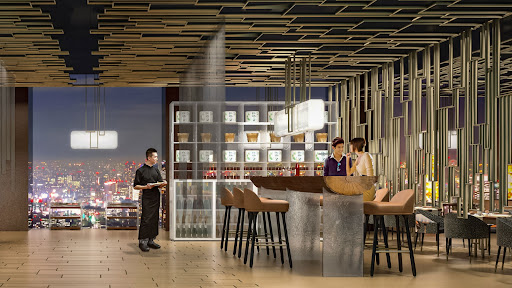
Commercial real estate investments always aim to increase returns on investment (ROI). Commercial design is essential in achieving that goal. Today’s commercial architects and interior designers are tasked with various duties, from incorporating traditional elements like target markets and structural resilience into a design to more complex strategies, including environmental, social consciousness, and governance aspects. To maximize ROI potential, investors must understand how these strategies can be applied through thoughtful commercial design.
Understanding Target Markets
The key to successful commercial real estate investments is understanding the target markets that your property will serve. Doing this requires an in-depth analysis of the demographics, psychographics, and behavior profiles of the people likely to use the space. By clearly understanding what these potential tenants and customers look for in terms of design elements, you can customize your interior design accordingly. For example, suppose you own a retail space catering to young adults. Modern aesthetics, bold colors and shapes, and unique textures should be considered when creating interior designs.
Maximizing Functionality
Functionality is essential in any commercial design. For example, suppose you own a restaurant or cafe. In that case, ensuring that the space layout is conducive to traffic flow and enough seating and dining options to accommodate your customers is important. Similarly, when designing an office space, making sure that available desk spaces can be used efficiently with plenty of light and air motion will greatly improve its functionality. By maximizing functionality in any commercial design, you can ensure that your tenants have access to all they need while enabling them to maximize their experience.
Enhancing Structural Resilience
Structural resilience is another key factor for increasing ROI investing in commercial real estate. It means ensuring that the structure of the building and any of its components can withstand the harshest conditions and remain functioning. It involves several steps, such as inspecting for potential damage, using appropriate building materials, improving insulation, installing fire safety systems, and other preventative measures. Ensuring your commercial spaces are structurally strong will increase their lifespan and enable them to offer better services to their tenants, resulting in a greater return on investment.
Incorporating Environmental Strategies
Environmental considerations should also be taken into account when designing a commercial space. For example, it is important to use sustainable materials in construction, incorporate energy-efficient lighting or HVAC systems into designs, and create green features like rooftop gardens or solar panels on the building’s exterior. Incorporating these strategies reduces a building’s carbon footprint and makes it more appealing to tenants looking for environmentally-conscious spaces.
Applying Socially Conscious Design
Socially conscious design is becoming increasingly popular in the commercial real estate industry. It involves creating interior designs that reflect cultural diversity, incorporate elements of accessibility and foster feelings of belonging. For instance, designing a workplace with gender-neutral bathrooms or including features that make it easier for people with disabilities to use the space are both examples of socially conscious design. Considering these aspects when designing a property can help create an aesthetically pleasing, welcoming, and inclusive environment for all users.
Conclusion:
Today’s commercial real estate investments benchmark more data points than ever before. As a result, commercial Architects and Interior Designers must consider target markets, functionality, structural resilience, environmental strategies, and socially conscious design to realize a property’s potential. By considering all of these elements when designing a commercial space, you can make an attractive, pleasing, functionally efficient, and sustainable environment for its tenants. In addition, it ensures that the investment has a higher return on investment and provides an optimal user experience.